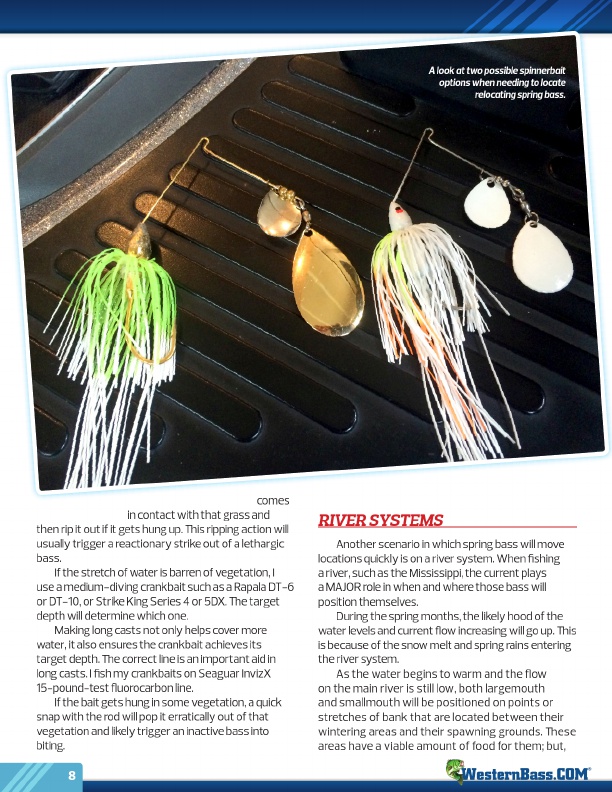
A look at two possible spinnerbait
options when needing to locate
relocating spring bass.
comes
in contact with that grass and then rip it out if it gets hung up. This ripping action will usually trigger a reactionary strike out of a lethargic bass.
If the stretch of water is barren of vegetation, I use a medium-diving crankbait such as a Rapala DT-6 or DT-10, or Strike King Series 4 or 5DX. The target depth will determine which one.
Making long casts not only helps cover more water, it also ensures the crankbait achieves its target depth. The correct line is an important aid in long casts. I fish my crankbaits on Seaguar InvizX 15-pound-test fluorocarbon line.
If the bait gets hung in some vegetation, a quick snap with the rod will pop it erratically out of that vegetation and likely trigger an inactive bass into biting.
8
RIVER SYSTEMS
Another scenario in which spring bass will move locations quickly is on a river system. When fishing a river, such as the Mississippi, the current plays a MAJOR role in when and where those bass will position themselves.
During the spring months, the likely hood of the water levels and current flow increasing will go up. This is because of the snow melt and spring rains entering the river system.
As the water begins to warm and the flow on the main river is still low, both largemouth and smallmouth will be positioned on points or stretches of bank that are located between their wintering areas and their spawning grounds. These areas have a viable amount of food for them; but,
®